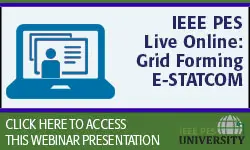Report: IoT for Connected Home – Communication and Cybersecurity Requirements
Raed Abdullah, Jay Anderson, Mike Dood, Didier Giarratano, Tim Godfrey, Shane Haveron, IEEE 802.24 TAG, Mario Jardim, Nicholas Kraemer, Steve Kunsman, Steve Mark, Ryan Newell, Nathan Wallace
-
Members: FreePES
IEEE Members: $45.00
Non-members: $70.00Pages/Slides: 25
12 Jul 2021
Connected Homes are residential customer dwellings that can transact with the customer's energy provider for purposes of information exchange or, if a Smart Home, execution of load or energy management commands. A Smart Home is a Connected Home that contains any number or combination of generation devices, storage systems or flexible loads for the purpose of providing the customer capability for managing their load profile, cost or comfort. The Connected Smart Home is enabling grid edge transformation whereby the customer becomes a prosumer helping their energy provider uphold grid integrity (reliability & safety), better manage supply to demand (i.e., have demand follow supply), and possibly reallocate or defer system upgrades through management of the premise's load shape impact on the grid assets.
These transformations at the edge will also impact power system operations and control and affect existing load forecasting, generation dispatching, energy costing and power restoring functions. With ever more transformation, the complexity in executing these tasks will also become ever more complex; new tools will be needed to handle the many more variables, and energy providers will need to develop collaborative relationships with the customers who will transform into prosumers.
With the benefit of communication technology, energy data can be shared within a smart city, such as with the smart transportation system, to improve the communities' well-being. In spite of the advantages brought by technology, challenges exist that need solving and the most important one is cybersecurity. Millions of connected consumer grade IoT devices will require well defined cyber-security programs. A second important challenge is for the IoT devices to communicate at least with the relevant stakeholders in an interoperable manner. Different communications technologies and protocols are in use and are not interoperable across vendor platforms. Use of a standardized interoperability protocol (IEEE or IEC) will unlock full benefit from this new edge technology.
These transformations at the edge will also impact power system operations and control and affect existing load forecasting, generation dispatching, energy costing and power restoring functions. With ever more transformation, the complexity in executing these tasks will also become ever more complex; new tools will be needed to handle the many more variables, and energy providers will need to develop collaborative relationships with the customers who will transform into prosumers.
With the benefit of communication technology, energy data can be shared within a smart city, such as with the smart transportation system, to improve the communities' well-being. In spite of the advantages brought by technology, challenges exist that need solving and the most important one is cybersecurity. Millions of connected consumer grade IoT devices will require well defined cyber-security programs. A second important challenge is for the IoT devices to communicate at least with the relevant stakeholders in an interoperable manner. Different communications technologies and protocols are in use and are not interoperable across vendor platforms. Use of a standardized interoperability protocol (IEEE or IEC) will unlock full benefit from this new edge technology.
Chairs:
Chair: Marc Lacroix,
Vice-chair: James Formea
Vice-chair: James Formea
Primary Committee:
Power System Communications and Cybersecurity Committee (PSCC)
Sponsor Committees:
Task Force S6


